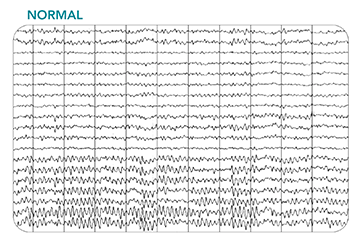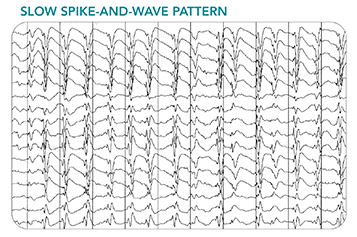What is LGS?
Lennox-Gastaut syndrome (LGS) is a complex, rare, and severe type of epilepsy. While doctors don't yet know everything about this condition, they do know a lot. Here are some known facts about LGS.
Facts About LGS
LGS
is a severe type
of epilepsy
It is estimated that
LGS makes up
1% to 2%
of all epilepsy cases
Symptoms are typically
first seen
in children between the ages of
2 and 8
Seizures are frequent—
occurring
daily
—and difficult to manage
The types of seizures
seen in LGS
change
over time
Some people are not
diagnosed until
adulthood
LGS
is characterized by a
"triad"
of symptoms
LGS affects people of
all
races and
ethnicities
LGS is a
lifelong
condition
for which there is
currently no cure
WHAT YOU SHOULD KNOW
No two people experience LGS the same way, so it’s hard to predict how a person will be affected. Some may have mild symptoms, while others may have severe symptoms. With that in mind, it’s important to know that:
- Seizure management is possible
- For people with LGS and their families, setting realistic expectations and focusing on what you and your family can do can be helpful
Living with LGS is challenging, and everyone’s journey will be different. By learning all you can, understanding what to expect and working with your healthcare team, there’s a lot you can do to provide the best care for your loved one.

Signs of LGS
A diagnosis of LGS is based on more than just seizures, although having different types of seizures is an important part of the diagnosis. There are 3 signs that your loved one may have LGS.
Sign #1: TYPES OF SEIZURES
People with LGS may experience many different types of seizures. Watch these videos to learn about the different types of seizures and how they present.
Atypical absence
During atypical absence seizures, a person may stare blankly, appear to be daydreaming, and/or may not respond to what's going on around him or her.
Myoclonic
During a myoclonic seizure, a person's muscles may quickly alternate between stiffening and relaxing, which makes it look like he or she is twitching.
Tonic
Tonic seizures are the most common seizure type in people with LGS. They cause muscles in the arms or legs to stiffen. This type of seizure can happen when asleep or awake. Losing consciousness is possible.
Sign #2: DEVELOPMENTAL DELAYS
In addition to different types of seizures, the diagnosis of LGS is based on whether a person shows signs of developmental delays and cognitive impairment. Developmental delays appear in nearly all patients with LGS.
Infants may have
developmental delays
Children may develop
normally
but then
begin to lose ground
People with LGS
may have cognitive
impairment
Sign #3: DISTINCTIVE EEG
An electroencephalogram (EEG) is a snapshot of the brain’s electrical activity, shown in waves. The shape of the waves changes based on the activity of the brain when the EEG is taken. Normal brain activity shows a constant flow of very small and consistent waves, with spikes that are sharp and fast. An EEG in children with LGS usually shows a specific pattern of activity, called a slow spike-and-wave pattern. The dips and waves are much slower than normal, and they repeat at a slower frequency than those in a normal EEG. A slow spike-and-wave pattern EEG changes in adults with LGS.

- An EEG is a snapshot of the brain's "electrical" activity, but instead of taking a photo of the brain, the EEG records a series of waves.
- The shape of the waves changes based on the activity of the brain when the EEG is taken.

- Unlike normal brain activity that produces a constant flow of very small and consistent waves, spikes are sharp and fast.
- The dips and waves are much slower than normal waves and repeat at a slower frequency than a normal EEG.
